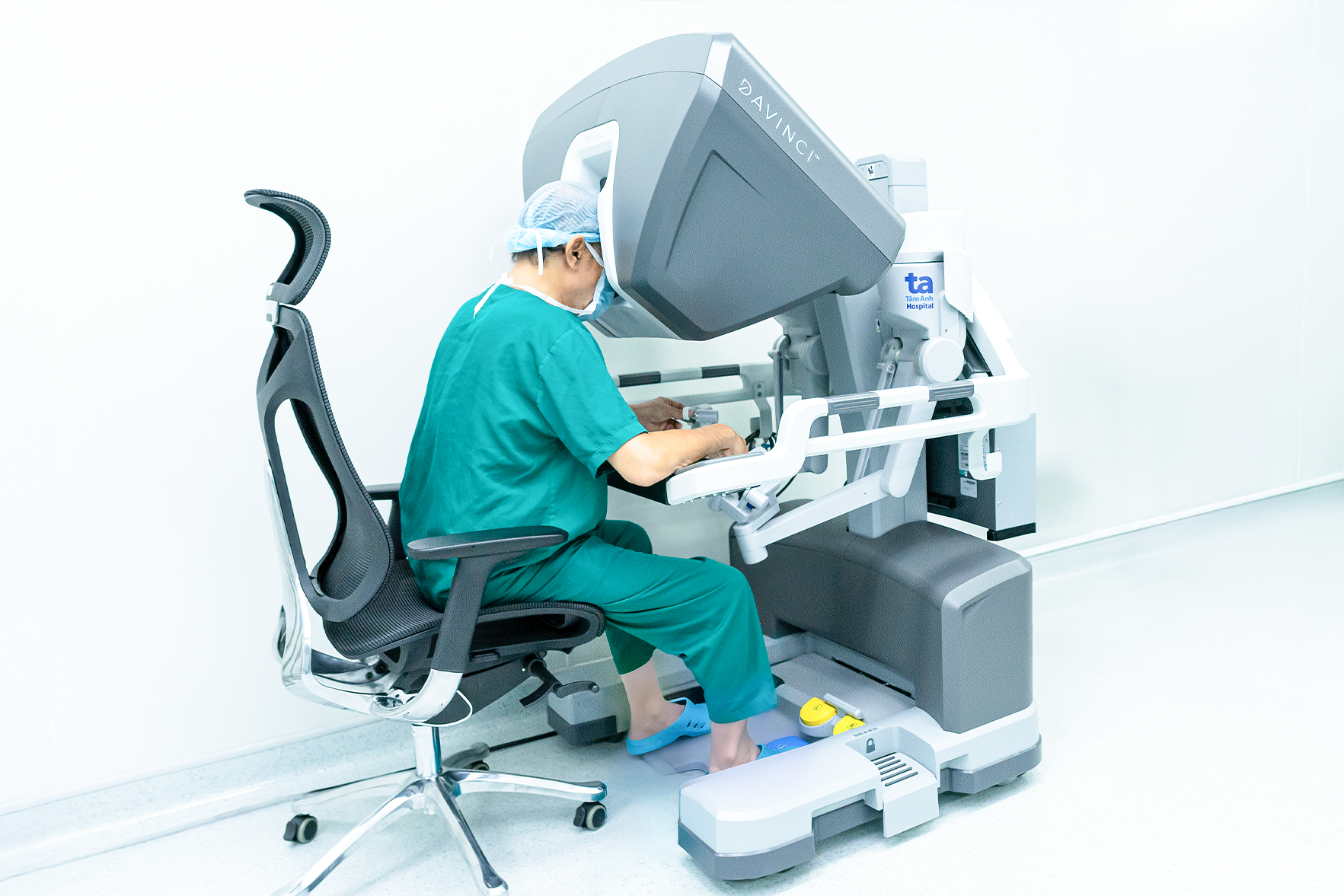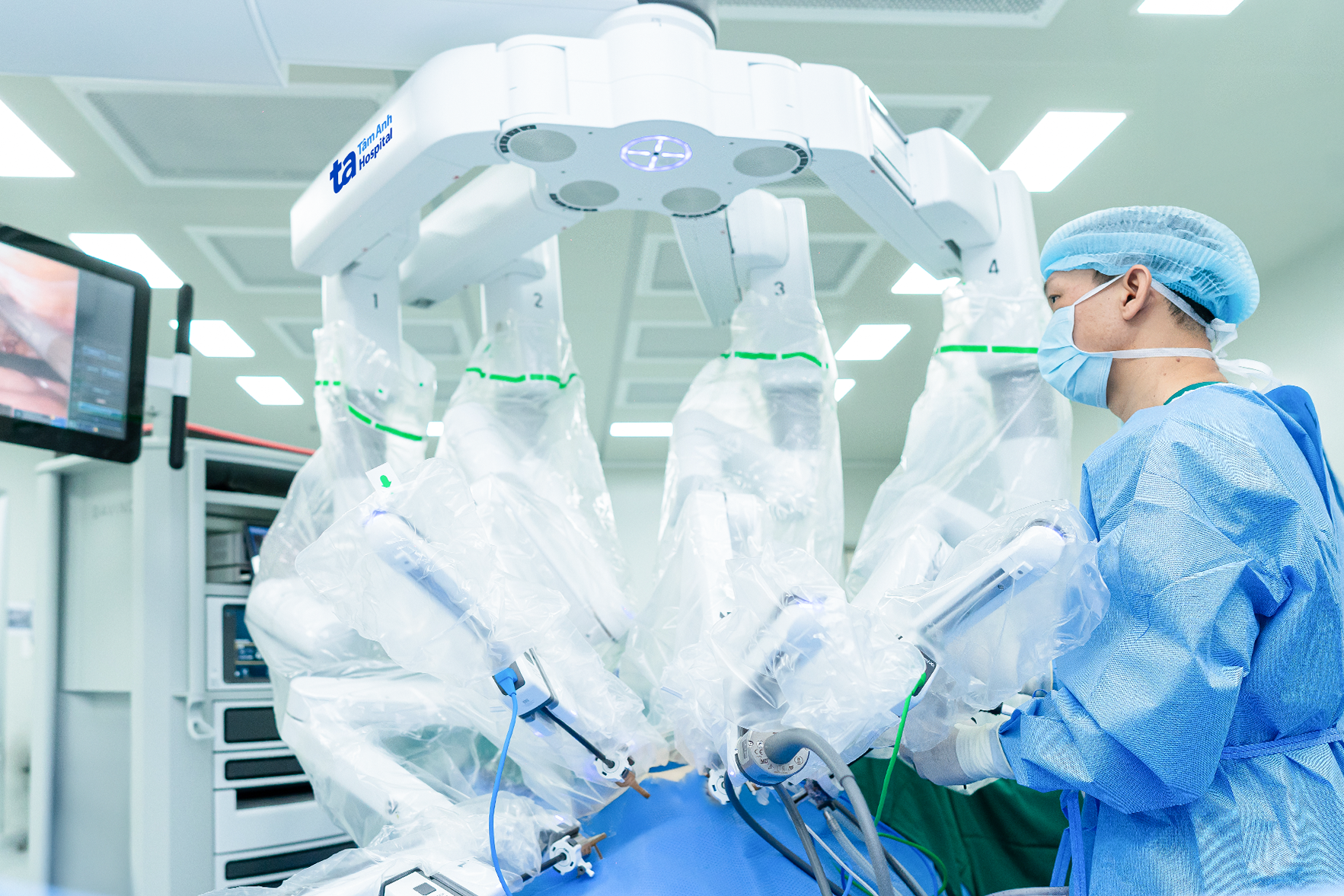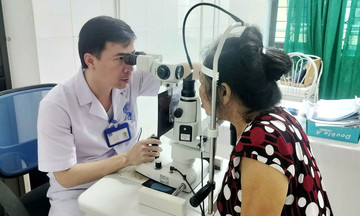Mr. Dung experienced months of painful and bloody urination, along with lower abdominal discomfort, prompting him to seek medical attention at the Urology, Nephrology, and Andrology Center of Tam Anh General Hospital in Ho Chi Minh City. An ultrasound revealed a 4 cm malignant bladder tumor that had penetrated the muscle layer and significantly invaded the surrounding pelvic area.
Associate Professor, Doctor Vu Le Chuyen, Director of the Urology, Nephrology, and Andrology Center, explained that due to Mr. Dung's advanced age and underlying conditions, including hypertension and diabetes, a prolonged open surgery posed significant risks. Consequently, they opted for robotic-assisted laparoscopic surgery using the Da Vinci Xi system.
 |
Associate Professor Chuyen operates the Da Vinci Xi robot during Mr. Dung's bladder cancer surgery. Photo: Tam Anh General Hospital |
The surgeon manipulated the robot's four arms to navigate the intricate pelvic region, successfully removing the entire bladder, seminal vesicles, prostate gland, and lymph nodes. According to Associate Professor Chuyen, extensive lymph node removal reduces the risk of local metastasis.
Because the tumor had spread through the ureter to the urethra, reconstructing a new bladder using the patient's own tissue was not feasible. As a result, both ureters were redirected to the skin surface, allowing urine to drain into an external collection bag.
Mr. Dung recovered quickly after the procedure, experiencing minimal post-operative pain and being discharged after three days. Doctors advised him to monitor his health closely for one to three months to ensure proper urine drainage and prevent complications. Following his recovery, he will undergo chemotherapy at the hospital's Oncology Department.
 |
The robot's four arms assist in the complete removal of the patient's bladder. Photo: Tam Anh General Hospital |
Associate Professor Chuyen noted that the 5-year survival rate for bladder cancer patients varies considerably depending on the stage of diagnosis. In early stages, the disease can be effectively treated with methods like surgery and intravesical chemotherapy (six cycles, once a week) to prevent recurrence. For cases where the cancer has invaded the muscle layer, complete bladder removal is necessary, often combined with pre- or post-operative systemic chemotherapy, depending on the patient's condition.
Bladder cancer often presents with non-specific urinary symptoms, making early detection challenging. Common symptoms include: blood in the urine, frequent urination, pain or burning sensation during urination, pelvic pain or discomfort, and lower back pain. Several factors can increase the risk of bladder cancer, such as smoking, exposure to harmful chemicals, chronic bladder inflammation, prior pelvic radiation therapy, and certain chemotherapy drugs. Family history and age (over 55) also significantly increase the risk.
Preventive measures include maintaining a healthy lifestyle, avoiding smoking, staying hydrated, exercising regularly, minimizing exposure to chemicals, and undergoing regular health checkups.
Ha Thanh
*The patient's name has been changed.
| Readers can submit questions about urological diseases here for doctors to answer. |












